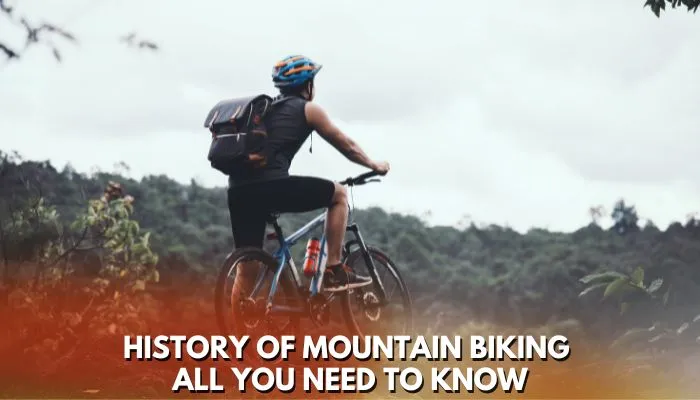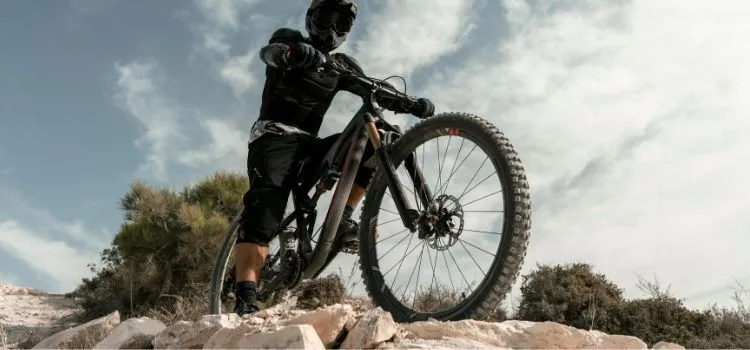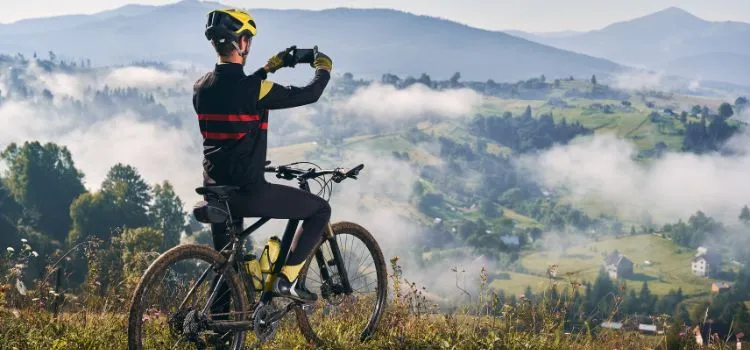History Of Mountain Biking | All You Need To Know

There has been a lot of enthusiasm, innovation, development, and fierce competition throughout mountain biking’s amazing history. Many historians are unable that they concur on who originated the mountain bike because the background of the bicycle and the mountain bike are interlinked.
Table of Contents
Short Answer
You might be thinking, when was mountain biking invented?? If you compare mountain biking to cycling as a whole, it is a relatively recent riding discipline. Despite the fact that the first bicycles were created at the beginning of the nineteenth century, it took about 150 years before the first mountain bikes (MTB) appeared.
In this article, we will outline the history of mountain biking into one of the most well-liked cycling subjects, both competitively and recreationally, as well as some of the major figures who helped make that happen and make it so much popular all over the world.
Types And History Of Mountain Biking:
Mountain race biking is a leisure activity that entails traveling on two wheels over rough terrain, including hills, mountains, rocky paths, and forest routes. In order to meet the demands of tough terrain, it is a kind of cycling that calls for specialized bikes with characteristics like bigger tires, suspension systems, and more powerful frames.
With many disciplines like cross-country, downhill, enduro, as well as freeride, mountain biking can be appreciated as a recreational hobby or as a competitive sport. Every field has its very own set of guidelines, tests, and difficulties. But they all call for a similar combination of stamina, talent, and technical prowess.
- Cross-country biking:
Cross-country mountain biking competitions take place on looping courses, including climbs, descents, and challenging terrain. In order to sustain endurance during the entire race, riders have to negotiate the course as rapidly as they can while still controlling their energy levels.
- Downhill biking:
A steep, tricky track that might incorporate jumps, drops, as well as other obstacles is raced down in downhill mountain biking. To keep up speed and prevent collisions, riders must possess outstanding bike handling abilities and have the ability to respond swiftly to shifting terrain.
- Enduro biking:
Enduro mountain biking combines cross-country and downhill riding, with competitors racing over a series of mostly downhill stages interspersed with brief climbs. The winner is the bike rider with the lowest overall combined time.
- Freeride biking:
Freeride Mountain biking entails using artificial or natural obstacles like jumps, drops, as well as berms, typically in a biking park or similar specifically designated location. In a slopestyle opposition, riders often do feats and stunts that are scored on technique, difficulty, and performance.
Mountain biking may be an exciting and demanding sport that offers a terrific workout and a chance to take in nature. In order to guarantee a pleasant and secure one, it is crucial to wear the correct safety equipment, including a helmet, and ride within your capacity level.
How Did It All Start?

In Marin County, California, in the 1970s, mountain biking first gained popularity. A group of bikers started modifying their bikes to efficiently handle the off-road situations they found on mountain routes after being motivated by the challenge of riding their bikes on rough terrain.
Gary Fisher, who started experimenting with off-road cycling in the late 1970s, was one of the important figures in the early evolution of mountain biking. He and others began planning impromptu competitions and events, and the sport grew in popularity.
The first professional mountain bike race was conducted in 1980 in Marin County, and the sport developed in popularity during the 1980s and 1990s. In 1996, mountain biking was finally approved as an Olympic sport, and today it is a popular activity all over the world.
Historical Background:
- The history of mountain biking may be traced to a group of aficionados in California who experimented with off-road biking on upgraded cruiser bikes in the 1970s. These early cyclists were searching for a replacement for road biking that would let them enjoy off-road riding and rough terrain exploration. They started riding bikes that had been altered with wider tires and stronger frames on logging and fire roads in the mountains.
- The firm known as “Univega Alpina Pro” created the first mountain bike in mass production in 1977. This bicycle included a 15-speed gearbox, bigger tires, and a lightweight aluminum frame. It was created for use on dirt roads and rapidly became well-liked by the expanding mountain biking community.
- With ever more riders hitting the trails and competing in events, mountain biking grew in popularity during the 1980s. In 1987, the first mountain bike world championship was held, and by the decade’s conclusion. There were numerous businesses making mountain bikes as well as associated equipment.
- Mountain biking underwent further development in the 1990s with the launch of novel innovations, including disc brakes and suspension systems. These developments let riders travel over challenging terrain more quickly and aggressively. This gave rise to new mountain bike subdisciplines, including downhill and freeride.
- Mountain biking has grown in popularity recently, with hundreds of millions of riders worldwide participating in the sport in different ways. With new components, styles, and features like tubeless tires, electronic shifting, and whole suspension systems, mountain bikes have kept up to advance. Mountain bikes come in a wide variety of styles now, from light cross-country racing cycles to powerful downhill monsters and everything else in between.
With several businesses making bikes, parts, and accessories, as well as a growing market for competitions, events, and tours, mountain biking additionally continues to be a significant sector. Mountain biking is still a sport that is anchored in the excitement of going off-road and experiencing nature on two wheels, despite its development and expansion.
Modern Evolution In Mountain Biking:

With improvements in technology and design, mountain biking has kept going to advance over time, pushing the boundaries of what is feasible in challenging terrain. The following are some significant advancements in the current development of mountain bikes:
- Full Suspension:
In the beginning, mountain bikes had no suspension system at all. Thus, riders had to depend on their own strength and ability to absorb shocks and bumps. The front axle’s suspension fork followed, and it significantly improved the control and ride quality. However, the widespread availability of complete suspension systems didn’t occur until the middle of the 1990s. The bike’s front and rear suspension allowed Riders to navigate even more challenging terrain with greater confidence and speed.
- Tubeless Tires:
Mountain bike tires have also significantly changed over the years, with tubeless technology gaining popularity recently. Tubeless tires can operate at lower pressures because the inner tube is not present, improving traction and enhancing ride quality. Additionally, they lessen the possibility of pinch flats, which can be a common issue with conventional tubes.
- Carbon Fibre Frames:
Carbon fiber has emerged as the preferred material for high-end biking frames due to its strength and low weight. In addition to being exceptionally strong and responsive, carbon frames may be made to reduce vibrations for better comfort while riding.
- Plus-Sized Tires:
Over the past ten years, mountain biking has seen a rise in the use of “plus-sized” tires. Compared to conventional mountain bike tires, these tires have a broader profile, which increases grip and stability on rocky or slippery terrain. They also enable riders to operate at lower pressures for a smoother ride.
- Dropper Seatposts:
Allowing riders to rapidly and easily change their seat height on the fly, dropper seat posts have revolutionized the mountain biking industry. Riders are then able to reduce their seat how for increased control and maneuverability, making it simpler to navigate steep descents and challenging terrain.
With bikes that are quicker, more effective, and more competent than ever before, the modern evolution of mountain biking has made the activity more manageable and more pleasant than ever before.
Notable, Renowned Figures In This Field:
Over the years, there have been a lot of legendary riders in the mountain biking community. Here are some of the most influential and well-known figures in this field:
- Gary Fisher:
Gary Fisher was a mountain biking pioneer, as was previously noted. In the late 1970s, he started experimenting with off-road riding and played a crucial role in setting up the first recognized mountain bike event. Fisher also contributed to the founding of the business that would become Trek Bicycles.
- Tom Ritchey
Tom Ritchey was a significant individual in the early history of mountain biking. He was a skilled frame maker who produced some of the earliest mountain bikes explicitly designed for the terrain. Ritchey also contributed to the development of the initial clipless pedals as well as many other parts that are now considered standard on modern mountain bikes.
- John Tomac:
John Tomac is renowned as one of the all-time great mountain bikers. He was recognized for his breakneck speed and technical proficiency and won numerous international championships in both cross-country as well as downhill competitions.
- Juli Furtado:
In the 1990s, Juli Furtado was one of the most potent female mountain bikers. She was renowned for her technical skill and fluid riding style and won numerous world championships.
These are merely some of the numerous mountain bike legends. Each has significantly improved the sport and influenced how it is played now.
Conclusion:
The history of mountain biking is really the story of man’s pursuit of freedom and advancement. Nothing compares to setting off into the hills on your faithful metal horse, taking on climbs, destroying descents, and having fun with your mates.
Mountain biking has a promising future thanks to the sport’s ongoing development and growth. All in all, mountain biking has significantly grown all over the world and is eventually making new innovations. So what are you waiting for? Get your mountain bike fully maintained and on the road. You can have an incredible journey on these two wheels and make a memorable trip with your friends and family. Get on the streets and have the time of your life.
